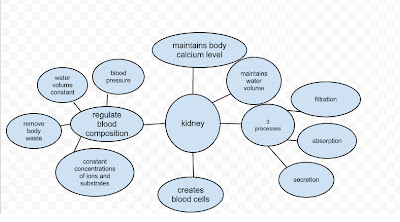joanne tan
Friday, March 2, 2012
Genome 1: Life
Beginning with the words "In the beginning was the word": RNA. RNA is more chemically active compared to DNA. However it is unstable. According to the history of life, prehistoric "ribo-organisms" created DNA because of the unstableness.Life consists of two skills: the ability to replicate and the ability to create order. The key to this is information. Information is the instructions for building and maintaining the equipment that creates the order. The letters A,C,G,T are the coded receipts that make up the instructions needed to create life.
Luca is LUCA, the Last Universal Common Ancestor. It is believed she lived on a warm pond, hot spring, or in a marine lagoon.
Luca is LUCA, the Last Universal Common Ancestor. It is believed she lived on a warm pond, hot spring, or in a marine lagoon.
Double Fertilization
Double fertilization is the mechanism of fertilization in which angiosperms, in which two sperm cells unite with two cells in the embryo sac to form the zygote and endosperm. It endures that the endosperm will develop only in ovules where the egg has been fertilized. Therefore prevents angiosperms from useless nutrients. It gives a rise to the zygotes and endosperms. When the sperm fertilizes the egg it forms the 2N zygote. After developing into an embryo sporophyte, it becomes dormant. When the second sperm joins with 2 polar nuclei it forms a 3N nucleus that divides to become an endosperm.

Starfish blog
Symmetry: have radical/bilateral symmetry,pentaradial, five planes of symmetry,
Germ cell layers: 3 germ cell layers; outer layer is epidermis; middle layer is thick called the dermis, composed of connective tissue and exoskeleton, third layer is a single layer is ciliated cells
Coelm: true coelom
Circulatory system: has poor open circulatory system
Feeding: feeds on fine particles in the water, detrrius, or other animals; filter eaters; gut is U- shaped with mouth and anus on the same surface
excretion: doesnt have excretion organs
Nervous system: includes circum- oesophageal rings, have complex nervous systems
crinoidea
ophiuroidea
asteroidea
echinoidea
holothuroidea
Blog 5
Why is it important to define and debate our understanding of intelligence and its origins? How does this relate to you?
Everyone has their own opinions about the definition of intelligence. There is no definite answer for the definition.
There are many kinds of intelligence. The different kinds of intelligence shows that we are all different and specialize in different things. With the different intelligence, we all learn in different ways. That is why there are many methods in learning. When teachers teach, they use many ways to show the concepts.
This relates to me because it taught me that there are different ways to learn. It makes me feel more comfortable when I do not understand the way a teacher teaches. It is not because I am not "intelligent" it is because I am not "intelligent" with the way the teacher teaches
Everyone has their own opinions about the definition of intelligence. There is no definite answer for the definition.
There are many kinds of intelligence. The different kinds of intelligence shows that we are all different and specialize in different things. With the different intelligence, we all learn in different ways. That is why there are many methods in learning. When teachers teach, they use many ways to show the concepts.
This relates to me because it taught me that there are different ways to learn. It makes me feel more comfortable when I do not understand the way a teacher teaches. It is not because I am not "intelligent" it is because I am not "intelligent" with the way the teacher teaches
Tuesday, February 7, 2012
extra credit blog
I was really confused on biochemistry chapters. Since my group did the ecology chapters for review and I took environment last year, it was clear and easy to understand. My favorite lab was the lab about flower pigment and chlorophyll. It was interesting to see the pigments travel up the filter paper and to see how far it would go depending on the solution used. Another lab that I enjoyed doing was the animal behavior lab. It was amusing to see the centipedes going towards their preferred habitat. The lab I least enjoyed doing was the osmosis. It use confusing because there were two parts of the lab happening at the same time. I think there are too many online simulations to do on top the blog of the week. Many people seem uncertain on how to do it when I ask for help.
Saturday, January 21, 2012
Cell Wordle
I choose these words because some of these words describe the cell. It is known as a building block and is the smallest unit of life. I included Robert Hooke because he was one of the first to describe it after looking through a microscope observing cork. I also included some of the organelles in a cell.
Subscribe to:
Comments (Atom)
